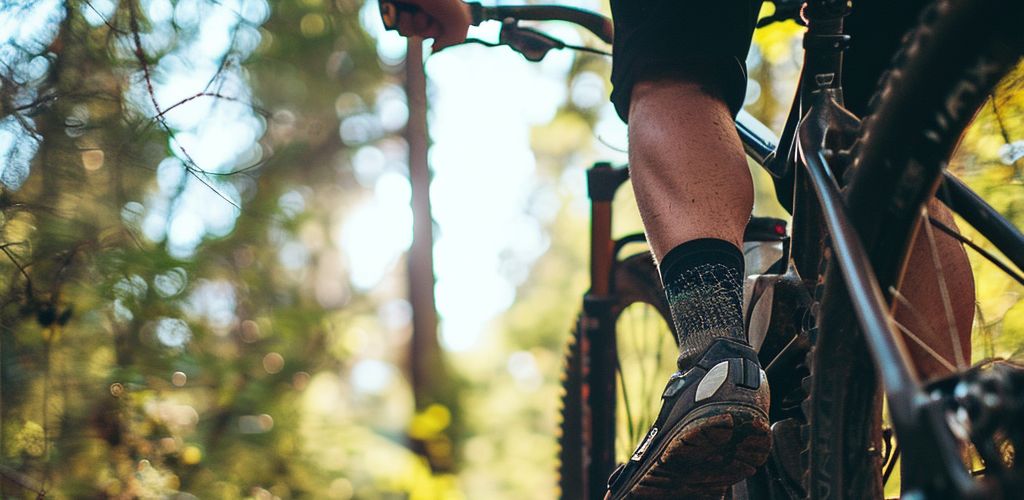Mountain biking, a thrilling and demanding outdoor sport, has gained immense popularity over the years for its adventurous nature and fitness benefits. Among the various physical benefits, many enthusiasts and beginners often wonder: does mountain biking build calves?
Yes, mountain biking can indeed build your calf muscles effectively.
This article delves further into this question by exploring the impact of mountain biking on calf muscles, offering insights from both scientific and practical perspectives.
Understanding the Calf Muscles
Before we dive into the effects of mountain biking, it’s essential to understand what we mean by ‘calf muscles’. The calf muscle, located at the back of the lower leg, is primarily made up of two muscles: the gastrocnemius and the soleus. These muscles are key players in activities like walking, running, and jumping, responsible for the flexion of the foot at the ankle.
The Mechanics of Mountain Biking
Mountain biking involves various terrains – from steep inclines to rugged trails. This variety in terrain means your legs, particularly your calves, are constantly adjusting to maintain balance and pedal effectively. The resistance from pedaling, especially uphill, requires substantial effort from your lower leg muscles, including the calves.
Uphill and Rough Terrain
When you’re pedaling uphill, your calf muscles work harder to push down on the pedals. This action is similar to doing calf raises, which is a well-known exercise for building calf muscles. Additionally, navigating through rough terrains, where you often stand on the pedals for better control and balance, also engages your calf muscles intensively.
Downhill and Flat Terrain
While downhill and flat terrains may not work the calves as intensively as uphill riding, they still contribute to muscle endurance and toning. In these scenarios, the calf muscles are more involved in stabilizing the leg and maintaining pedal contact.

The Role of Intensity and Duration
The influence of mountain biking on calf development largely depends on how intensely and frequently you ride. Higher intensity and longer durations will typically lead to more significant muscle development. Therefore, if building calf muscles is your goal, you would need to engage in mountain biking regularly and include a mix of terrains in your riding sessions.
Cross-Training for Enhanced Results
While mountain biking alone can contribute to calf development, incorporating other forms of exercise can enhance muscle growth and overall leg strength. Activities like weight training, particularly exercises like squats and deadlifts, and calf-specific exercises like seated and standing calf raises, can complement your biking routine.
Nutritional Considerations
To support muscle growth, including calf muscle development from mountain biking, proper nutrition is vital. A balanced diet rich in protein, healthy fats, and carbohydrates, along with adequate hydration, can aid in muscle recovery and growth.
Practical Tips for Maximizing Calf Development
Vary Your Terrain: Regularly switch between uphill, downhill, and flat terrains.
Increase Resistance: Use a higher gear, especially on inclines, to increase resistance.
Consistency is Key: Ride regularly, aiming for at least 3-4 times a week.
Cross-Train: Include strength training exercises for your legs.
Stretch and Recover: Proper stretching and rest are crucial for muscle growth and recovery.
Monitor Your Progress: Keep track of your rides and the development of your calf muscles.
Conclusion
In conclusion, mountain biking can indeed build calf muscles. The extent of muscle development depends on various factors like the terrain, intensity, frequency of rides, and overall fitness routine. By combining regular mountain biking with strength training and proper nutrition, enthusiasts can effectively enhance their calf muscle development.
Mountain biking not only offers the excitement of exploring diverse terrains but also provides a comprehensive workout, particularly benefiting the lower body. Whether you’re a seasoned biker or a newbie, understanding the impact of this sport on your body can help you tailor your biking and fitness routines for optimal results. Remember, as with any fitness journey, patience and consistency are key to seeing significant changes. Happy biking!

